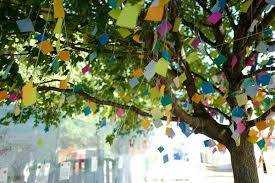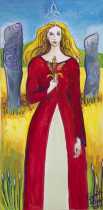 This May I was blessed to be asked to teach at a wonderful event at Dunderry Park in County Meath in Ireland. 'Animystics' was a two day event that wove together various Celtic traditions and earth based practices to really deepen our connection to the earth and our own souls. My session was all about connecting with tree spirits, and the tradition of the Bile, or sacred tree, clan totem and representative of the world tree in the Celtic Traditions. Standing there, in a field on a beautiful May morning, I was struck again by how such simple acts as breathing and being present to nature can restore our balance, and by extension our connection to our own sovereignty, our own souls, and the soul of the earth Herself. Dunderry is just a few miles from the hill of Tara, said to be the ancient seat of the semi- mythical high kings of Ireland, and I felt the ancient ancestors, with their passionate love of the land reach out to us, to remember, and honour Her again as a way to restore ourselves in these often troubled times.
This May I was blessed to be asked to teach at a wonderful event at Dunderry Park in County Meath in Ireland. 'Animystics' was a two day event that wove together various Celtic traditions and earth based practices to really deepen our connection to the earth and our own souls. My session was all about connecting with tree spirits, and the tradition of the Bile, or sacred tree, clan totem and representative of the world tree in the Celtic Traditions. Standing there, in a field on a beautiful May morning, I was struck again by how such simple acts as breathing and being present to nature can restore our balance, and by extension our connection to our own sovereignty, our own souls, and the soul of the earth Herself. Dunderry is just a few miles from the hill of Tara, said to be the ancient seat of the semi- mythical high kings of Ireland, and I felt the ancient ancestors, with their passionate love of the land reach out to us, to remember, and honour Her again as a way to restore ourselves in these often troubled times.
Tara is such a special place, a wide green hill that overlooks a vast and verdant landscape. On a clear day it is said you can see all of Ireland from it's summit. Once an Iron Age hill fort, it is also home to a Neolithic burial mound, 'the mound of the hostages', granting access to the womb of the earth, the realm of the sidhe, and the Lia Fáil, or Stone of Destiny, said to have been brought from the otherworldly city of Falias by the Tuatha de Danann, the Irish gods. The Lia Fáil is said to cry out when the rightful king stands upon it. Once it stood beside the mound, but now it stands sentry a little further off, overlooking the wide plains below. Whether this solitary monolith was truly the ancient mythical stone will always be up for debate, but standing there touching its weathered grey sides, sensing the endless generations that have come here, and used this as the touchstone, the still and central point to anchor their spiritual and earthly selves together, to find that link to sovereignty in a world that tries to take so much soul and so much power from us, is always a healing and humbling moment.
...










 This May I was blessed to be asked to teach at a wonderful event at Dunderry Park in County Meath in Ireland. 'Animystics' was a two day event that wove together various Celtic traditions and earth based practices to really deepen our connection to the earth and our own souls. My session was all about connecting with tree spirits, and the tradition of the Bile, or sacred tree, clan totem and representative of the world tree in the Celtic Traditions. Standing there, in a field on a beautiful May morning, I was struck again by how such simple acts as breathing and being present to nature can restore our balance, and by extension our connection to our own sovereignty, our own souls, and the soul of the earth Herself. Dunderry is just a few miles from the hill of Tara, said to be the ancient seat of the semi- mythical high kings of Ireland, and I felt the ancient ancestors, with their passionate love of the land reach out to us, to remember, and honour Her again as a way to restore ourselves in these often troubled times.
This May I was blessed to be asked to teach at a wonderful event at Dunderry Park in County Meath in Ireland. 'Animystics' was a two day event that wove together various Celtic traditions and earth based practices to really deepen our connection to the earth and our own souls. My session was all about connecting with tree spirits, and the tradition of the Bile, or sacred tree, clan totem and representative of the world tree in the Celtic Traditions. Standing there, in a field on a beautiful May morning, I was struck again by how such simple acts as breathing and being present to nature can restore our balance, and by extension our connection to our own sovereignty, our own souls, and the soul of the earth Herself. Dunderry is just a few miles from the hill of Tara, said to be the ancient seat of the semi- mythical high kings of Ireland, and I felt the ancient ancestors, with their passionate love of the land reach out to us, to remember, and honour Her again as a way to restore ourselves in these often troubled times.











